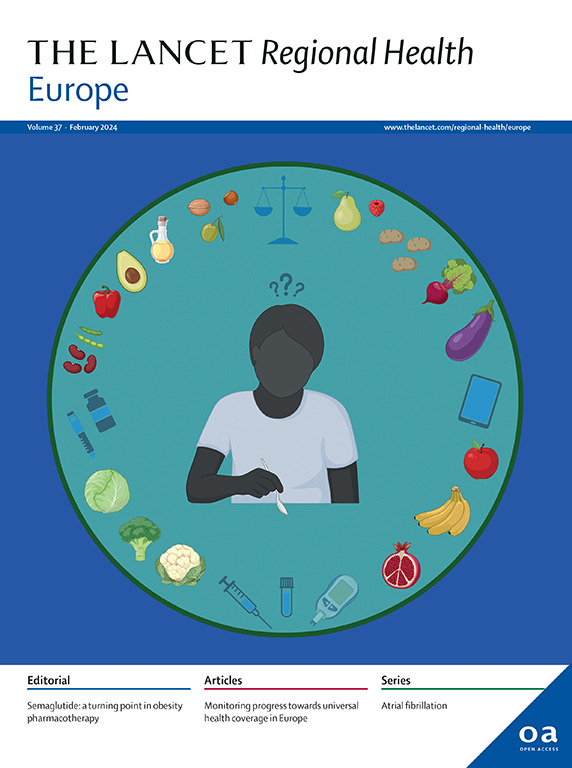School phone policies and their association with mental wellbeing, phone use, and social media use (SMART Schools): a cross-sectional observational study
IF 13.6
Q1 HEALTH CARE SCIENCES & SERVICES
引用次数: 0
Abstract
Background
Poor mental health in adolescents can negatively affect sleep, physical activity and academic performance, and is attributed by some to increasing mobile phone use. Many countries have introduced policies to restrict phone use in schools to improve health and educational outcomes. The SMART Schools study evaluated the impact of school phone policies by comparing outcomes in adolescents who attended schools that restrict and permit phone use.
Methods
We conducted a cross-sectional observational study with adolescents from 30 English secondary schools, comprising 20 with restrictive (recreational phone use is not permitted) and 10 with permissive (recreational phone use is permitted) policies. The primary outcome was mental wellbeing (assessed using Warwick–Edinburgh Mental Well-Being Scale [WEMWBS]). Secondary outcomes included smartphone and social media time. Mixed effects linear regression models were used to explore associations between school phone policy and participant outcomes, and between phone and social media use time and participant outcomes. Study registration: ISRCTN77948572.
Findings
We recruited 1227 participants (age 12–15) across 30 schools. Mean WEMWBS score was 47 (SD = 9) with no evidence of a difference between groups (adjusted mean difference −0.48, 95% CI −2.05 to 1.06, p = 0.62). Adolescents attending schools with restrictive, compared to permissive policies had lower phone (adjusted mean difference −0.67 h, 95% CI −0.92 to −0.43, p = 0.00024) and social media time (adjusted mean difference −0.54 h, 95% CI −0.74 to −0.36, p = 0.00018) during school time, but there was no evidence for differences when comparing usage time on weekdays or weekends.
Interpretation
There is no evidence that restrictive school policies are associated with overall phone and social media use or better mental wellbeing in adolescents. The findings do not provide evidence to support the use of school policies that prohibit phone use during the school day in their current form, and indicate that these policies require further development.
Funding
Public Health Research Programme, National Institute for Health and Care Research, Department of Health and Social Care, UK.
学校电话政策及其与心理健康、电话使用和社交媒体使用的关系(SMART Schools):一项横断面观察研究
青少年心理健康状况不佳会对睡眠、身体活动和学习成绩产生负面影响,一些人将其归因于手机使用的增加。许多国家已经出台了限制在学校使用手机的政策,以改善健康和教育成果。SMART学校研究通过比较在限制和允许使用手机的学校上学的青少年的结果,评估了学校电话政策的影响。方法我们对来自30所英国中学的青少年进行了一项横断面观察研究,其中20所学校实行限制性政策(不允许使用娱乐电话),10所学校实行宽松政策(允许使用娱乐电话)。主要结果是心理健康(使用沃里克-爱丁堡心理健康量表[WEMWBS]进行评估)。次要结果包括使用智能手机和社交媒体的时间。混合效应线性回归模型用于探索学校电话政策与参与者结果之间的关系,以及电话和社交媒体使用时间与参与者结果之间的关系。研究注册:ISRCTN77948572。研究结果我们从30所学校招募了1227名参与者(12-15岁)。WEMWBS平均评分为47分(SD = 9),两组间无差异(校正平均差- 0.48,95% CI - 2.05 ~ 1.06, p = 0.62)。与宽松政策学校相比,限制政策学校的青少年在上学期间使用手机的时间(调整后的平均差异为- 0.67小时,95% CI为- 0.92至- 0.43,p = 0.00024)和使用社交媒体的时间(调整后的平均差异为- 0.54小时,95% CI为- 0.74至- 0.36,p = 0.00018)较低,但在工作日或周末的使用时间比较中没有证据表明存在差异。解释:没有证据表明学校的限制性政策与青少年手机和社交媒体的总体使用或更好的心理健康有关。研究结果并没有提供证据来支持禁止在校期间使用手机的学校政策的现行形式,并表明这些政策需要进一步发展。英国卫生和社会保障部国家卫生和保健研究所公共卫生研究方案基金。
本文章由计算机程序翻译,如有差异,请以英文原文为准。
求助全文
约1分钟内获得全文
求助全文
来源期刊

Lancet Regional Health-Europe
Multiple-
CiteScore
19.90
自引率
1.40%
发文量
260
审稿时长
9 weeks
期刊介绍:
The Lancet Regional Health – Europe, a gold open access journal, is part of The Lancet's global effort to promote healthcare quality and accessibility worldwide. It focuses on advancing clinical practice and health policy in the European region to enhance health outcomes. The journal publishes high-quality original research advocating changes in clinical practice and health policy. It also includes reviews, commentaries, and opinion pieces on regional health topics, such as infection and disease prevention, healthy aging, and reducing health disparities.
 求助内容:
求助内容: 应助结果提醒方式:
应助结果提醒方式:


